Rock-cut temples in India – the history of the construction
The second part of the article about the history of the underground construction in India is about the ancient temples cut in the rocks. These temples are preserved thanks to the construction technologies of their time. The first part of the article about stepwells of India can be read here.
Content
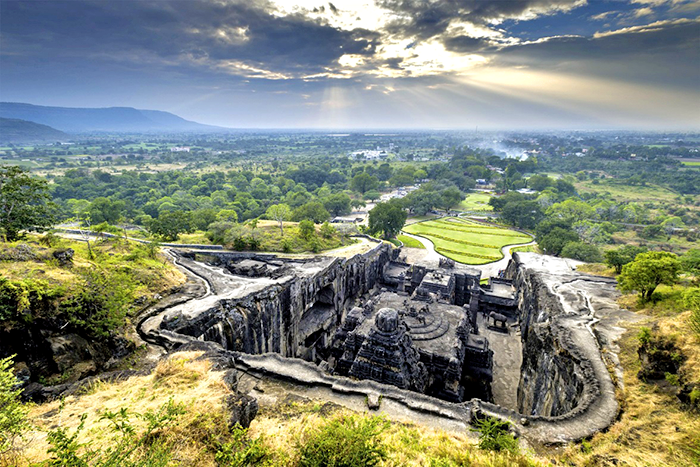
The Kailasha temple in the Ellora caves
The Ellora caves
Ellora village is located in the Indian state of Maharashtra. There are 34 caves in total here that became sacred for the Buddhists, Jains and Hindus. The place is situated in 29 km from the large city Aurangabad. All the cave temples were cut in the Western 2 km long part of the volcanic origin rock during the VI – IX centuries. The caves are divided in three groups according to their religious affiliation and numbered by the modern researchers for the convenience: first 13 caves are Buddhist, the caves from 14 to 29 are Hindus and 4more are Jain.
The Kailasha temple is a temple of the 16th cave of Ellora and it is dedicated to Brahmans gods. It was constructed during the reign of the King Krishna I in the VIII century. The temple was cut from the monolith rock and richly decorated by the masters of the stone carving, who proceeded with their work from the top down.
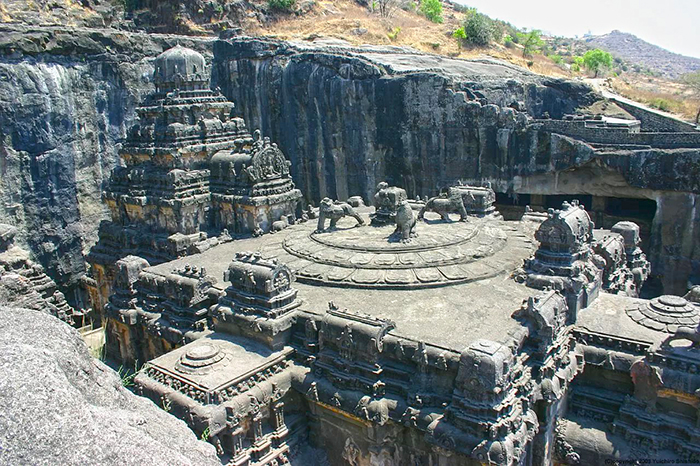
The Kailasha temple in the Ellora caves
Such a technique presupposes zero engineering mistakes as no reparation work is possible. This makes the precise work of Indian masters so astonishing. Thanks to the way of the construction and the rest part of the rock’s protection, the 12 centuries of its history did not affect the structure too much. The temple is dedicated to Shiva, hence the name – Kailash mountain in the Tibet is believed to be the place of the god’s rest, where he meditates with his wife Parvati.
The height of the building, or the depth in this case, is 33 metres. The courtyard of the temple is 51 metres wide and 58 metres long. The basement of the building is decorated with 3 metres high figures of elephants. The Kailash temple is in the UNESCO World Heritage list.
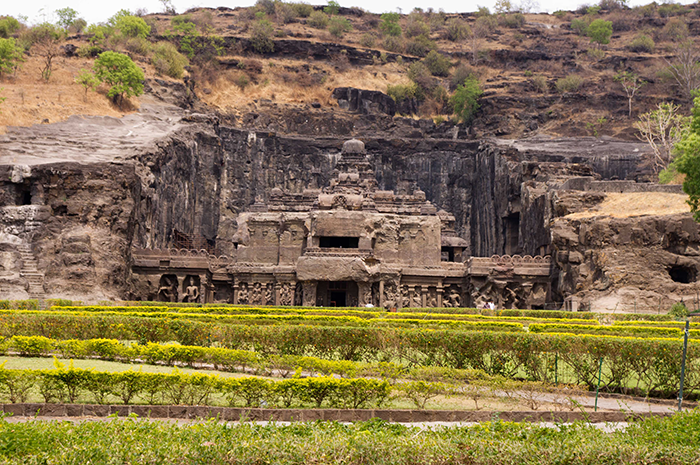
The Kailasha temple
The Ajanta caves
The Ajanta caves are the Buddhism cultural heritage object and a major tourist attraction. Its beautiful name derives from the name of the village near. The cave temples appeared there first in the II-I centuries BC on the territory of the Indian state of Maharashtra at the distance of 107 km from the city Aurangabad. Several Buddhist temples were cut in the rocks and decorated during the times of the Gupta Empire, which occupied Northern and Central India in the IV-VI centuries.
The objects of art – sculptures and paintings – served as the basis for the including of the place into the UNESCO World Heritage list in 1983. In total, there are 30 caves constructed at different times.
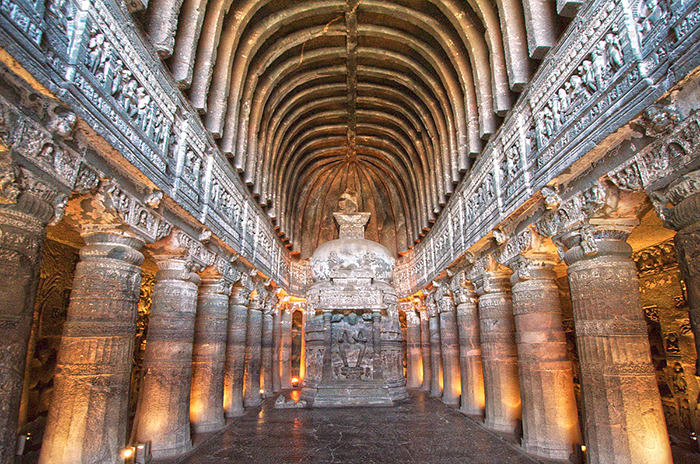
The Ajanta cave No26, source: kevin standage
For a long time the Ajanta caves were hidden in jungles. Only a few Indian sources mentioned their existence and some locals also knew the location. In 1819, the British officer went for hunting and accidently found them. The Europeans got acquainted with the place. The caves were cleaned from the congested mud and garbage and quickly became a popular place to visit.
The basalt rock where the caves were cut in is a part of the Deccan plateau. The U-shaped rock follows the lines of the river Waghora. The quite place was a nice location for Buddhist monks, who used to sequester themselves there for praying and meditation. Each cave had a staircase leading to the water, most of the stairs disappeared over time.
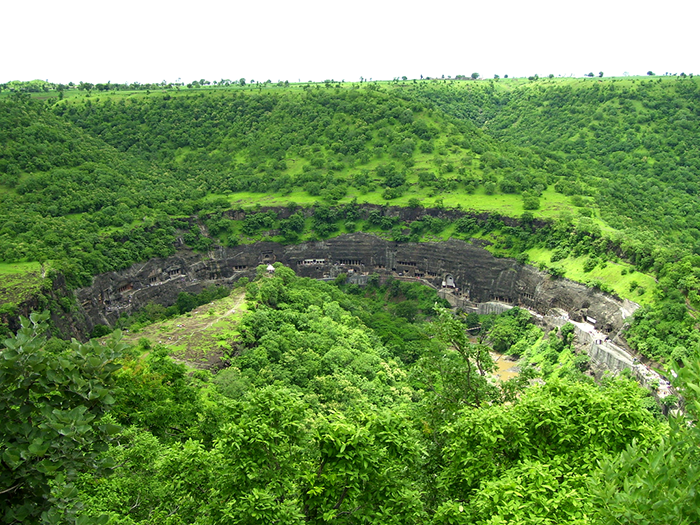
The Ajanta caves
The earliest painting found here dates back to the II century BC, but the decorations also include traditional Indian stone carvings. Even with the modest lighting inside the caves the art displayed there is impressive and strikes the tourists with its workmanship. The researchers found the evidence that the decorating works and excavating were implemented simultaneously. The workers excavated the tunnel and then carved the space around it adorning the walls with stone carving. Then the sculptures and paintings were added.
The Badami caves
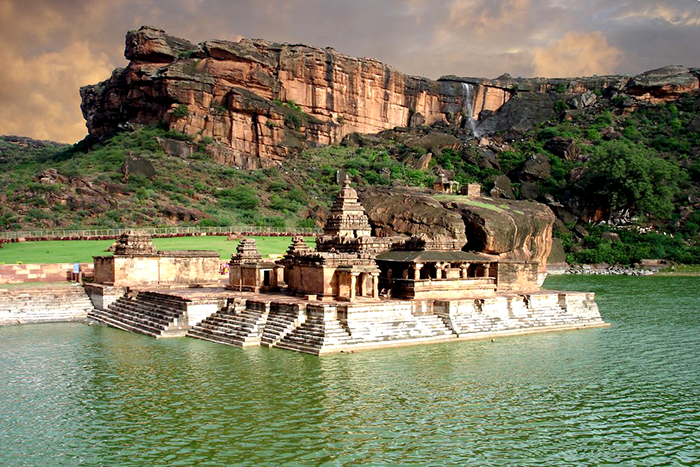
The Badami cave temples. Source: badami-besttourismplaces.com
The Badami caves are located in the Indian State of Karnataka and comprise 4 temples: three for Brahmans gods and one for Jain. The caves were developed along the shore line of the artificial lake Agastya.
The oldest temple belongs to Vishnu, the god depicted there in the sandstone. Also it is the largest temple in the complex. It was built in the VI century. One more temple is dedicated to Vishnu and one is for dancing Shiva. All the temples had been completed by the VIII century. The temples are similar in its structure: a terrace, a column hall, a sanctuary. The height and the depth of the excavated parts are different, but main halls are usually spacious, with the length of the wall being about 20 metres.
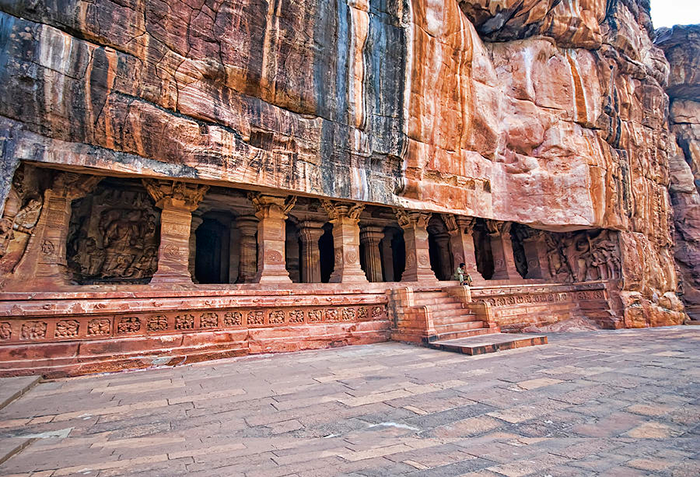
The temple entrance.Source: wondermondo.com
India possesses many underground architectural treasures with the most being of them being listed. For example, there are the Elephanta caves on island of the same name and the underground temple of Shiva in Hampi. The climate conditions and resources affected the locations of the sacred structure in the earlier history of India making them hide in the rocks, which preserved them eventually for the next generations.
![]() Read more about stepwells of India
Read more about stepwells of India
Additional articles
Select an article of interest:
Mongolia designs new railway “Bohdan”
March 1, 2022
The construction of largest hydraulic tunnel has begun in Qatar
February 28, 2022
JSC "VO "Mashinoimport" supplied escalators for the Novosibirsk metro
December 22, 2021
Russian city Samara plans to build a metro
December 17, 2021
Tell us about our article to your friends,
sharing a link in a social network















Comments (0)
I hereby confirm that I am familiar with the privacy policy of
and agree to the processing of personal data. Read more